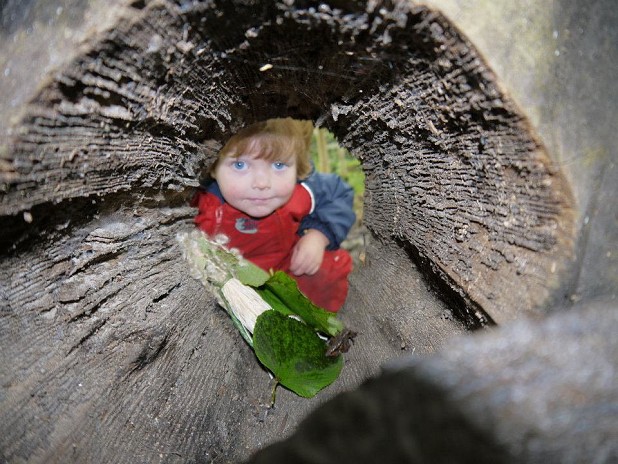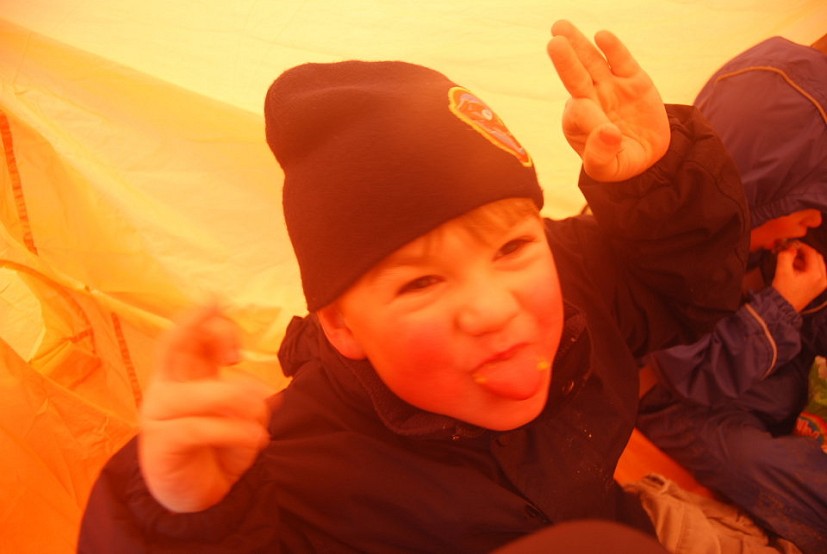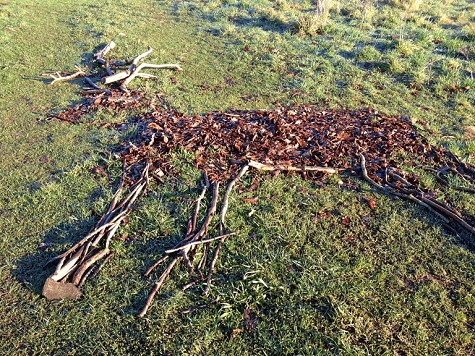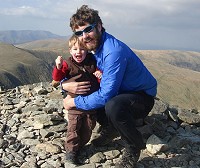Outdoor Play for Family Walks, part 1 - Autumn
Family walks can be among the best of times; they may also be some of the worst. If the kids get bored or mutinous, far from home on a rain-soaked moor, then things will go downhill fast. So what can parents do to keep children enthused on a long day outdoors? We kicked off the topic of walking with nippers in a recent piece from Mountain Training (see here). As a follow-up this series of articles by Forest School practitioner Ed Docwra looks at games and activities in more detail, borrowing some ideas from Forest School and other forms of outdoor learning. Armed with a toolkit of activities, a few foraged leaves and twigs, and some of the gear already in your rucksack, you should be able to keep the kids entertained for hours. They might even pick up the rudiments of some key hillwalking skills along the way.
Part 1 is a little bit autumnal, in keeping with the season.
Nobody wants their good intentions to backfire. Least of all to have their child grow up to be the inactive one in the pub regaling friends that are due to go walking with tales of how nobody would catch them doing that. They have, you see, some not-so-fond childhood memories of being tired, wet and miserable when their well-intentioned parent dragged them up hills every weekend. The best way to avoid this is to make walking fun for little ones who get tired easily, and maybe have short attention spans. But how?
Over this series I'll be suggesting games and activities you can use to break up a walk, and motivators that will take minds off tired feet. Nearly all require only the kit you have with you anyway, and the natural materials that you find around you. Many also aim to help your child's outdoor development, whether that be their movement across rough terrain or basic navigation skills. In this first instalment I'll look at some activities and games particularly suited to the autumn.
1. Nessie Attacks
An important bit of kit that you hopefully carry on the hill is a group shelter. Great for lunch stops on wet or windy days, navigational checks and of course invaluable for keeping a casualty warm if you are unfortunate enough to have an accident, they should be a staple of your regular hill kit. But have you ever thought of using them for some impromptu games to break up a walk?
How about trying a game of Nessie Attacks? This works best if there are a few children to play as well as Mum and Dad. Get everyone to sit on the ground holding a rolled up edge of the group shelter so that it forms a rough circle. With everybodys' legs stretched out underneath the group shelter you all start to shake it up and down to create waves on the 'loch'. One child (or adult) is then nominated as Nessie and has to crawl around underneath. They quietly seize the legs of anyone from around the perimeter (who must give a blood-curdling scream) and pull them under the shelter. Nessie now swaps places.
2. Hill Rolling
Such a simple activity, yet it can be so much fun and we've all done it at some point in our lives. Choose a good location with a gentle and not too steep slope, a bit of a run out to slow down on and without any obstructions or hazards like rocks sticking out. Rolling down side on is a good start. On gentle slopes head-over-heels rolls can also be attempted. This activity is a great incentive to get younger legs walking uphill in the first place, so that they get to roll down again. After doing it on one walk the kids will realise how much fun it is - so that's even more of an incentive on the next day out. Just beware, this activity could cause a bit of a halt in your walk as the kids suddenly find energy to keep running up to do it again.
3. Make a Stick Picture
So much fun can be had with a stick, and this activity helps to motivate younger walkers for a period, before being able to give them a little break and let their creative side come out.
While walking along get your children to start collecting sticks that they think would be good for making a picture. Once they have a decent bundle you can take a five or ten minute break as they create a picture out of the sticks that they have collected. If they need some inspiration maybe ask them what their favourite thing is that they've seen on the walk so far, animals for instance.
You can develop this activity further by creating a story strip, making a series of pictures, each the frame of a story. This way you can keep the children engaged throughout the duration of a walk (depending on the length of the story!).
4. Natural Map Making
This activity requires a little time, so it's ideal for a lunch stop at the edge of some woods. It is also a great way to start introducing some of the concepts of maps such as scale, orientation, symbols and keys. Find a spot with a few interesting features, maybe woodland with a track and a stream. The children then have to use the natural materials around them to create a map of the area. Pine cones become boulders, small pebbles are laid out as footpaths and earth is piled up to create a knoll. You could then put an X on the map where you have hidden something so they can go off and find it.
5. Raft Race
Nearly everyone has played Pooh Sticks at some point or another, so here's a great activity to take things a step further. Get the children busy gathering natural materials, then create a miniature natural raft from the sticks, moss, leaves or whatever they find. They could bind sticks together with reeds or grasses or simply stick a few twigs into a leaf. The race is then on! It's great if your route follows a watercourse as the children will want to keep walking and watching their raft float along downstream.
Nb. For some ideas on child-friendly routes see this destination article: Ten Fab Family Hills.
About Ed
Mountain Leader and Forest School Practitioner Ed Docwra is passionate about getting children outdoors. He also runs specialist children's outdoor retailer Mountain Munchkins, which provides outdoor kit and equipment specifically for children.
When not working at the Mountain Munchkins store Ed can be found delivering Forest School sessions to local schools and community groups or out training with Bowland Pennine Mountain Rescue Team, of which he is a member.
You can book him for a Forest School session here




